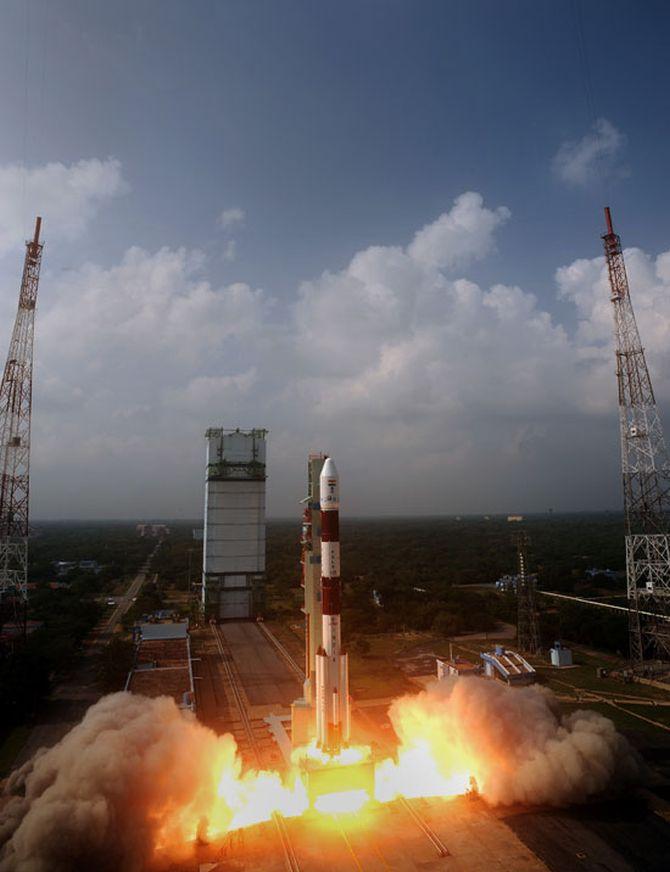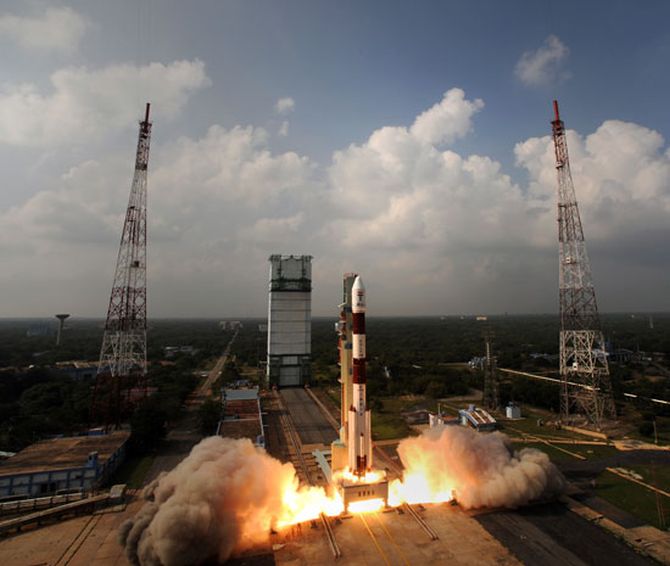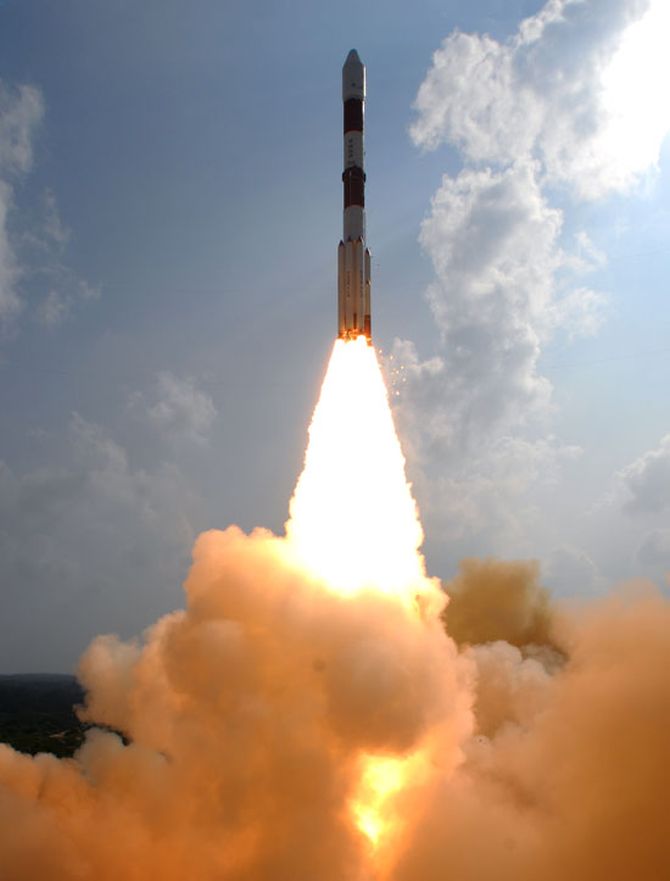
India's maiden mission to Mars was successfully launched on Tuesday with its polar rocket placing the Mars spacecraft precisely into an intended Earth orbit in its first-ever historic inter-planetary odyssey in a bid to join a select band of nations.
Following are some interesting facts about the 1,350-kg 'Mangalyaan' mission and its launch into the orbit around Earth some 44 minutes after a text book launch at 2.38 pm from the Satish Dhawan Space Centre.
The Mars Orbiter Mission is India’s first-ever inter-planetary expedition. New technology had to be developed to enable the probe to run autonomously.
Prime Minister Manmohan Singh announced the Mars mission 15 months ago, shortly after a Chinese probe fell through when it failed to leave Earth's atmosphere.
European Space Agency of the European consortium, National Aeronautics and Space Administration of the US and Roscosmos of Russia are the three agencies which have successfully sent their missions to the planet.
...

The Mars Orbiter Mission is aimed at establishing India's capability to reach the Red Planet. It focuses on looking for the presence of methane, an indicator of life on the planet.
The spacecraft would go around the Earth for 25 days before the ISRO plans to do trans-Mars injection on December 1, enabling it to undertake the long voyage towards Mars.
In its 300-day, 780-million-kilometre journey, the spacecraft will orbit Mars and survey its geology and atmosphere. The satellite will enter the Mars orbit in September 2014.
The spacecraft will reach the red planet next September, making India the only Asian country to reach Mars with a programme designed to showcase its low-cost space technology.
The total cost of the project is Rs 450 crore, which is less than a sixth of the amount earmarked for a Mars probe set to be launched by the National Aeronautics and Space Administration.
...

Mars Orbiter Mission carries five scientific payloads to observe Martian surface, atmosphere and exosphere extending up to 80,000 km for a detailed understanding of the evolution of that planet. These payloads consist of a camera, two spectrometers, a radiometer and a photometer. Together, they have a weight of about 15 kg.
ISRO had initially planned the launch on October 28, 2013, but it was postponed to Tuesday following the inability of ISRO's spacecraft tracking ships to take up pre-determined positions due to poor weather in the Pacific Ocean.
The Indian Deep Space Network will perform navigation and tracking operations of this mission.
Additional monitoring will be provided by Shipping Corporation of India's tracking ships SCI Nalanda and SCI Yamuna which are currently in position in the South Pacific.
...

The official countdown for blast-off began at 06:08 am on November 3, 2013 and ended with the successful completion of the automatic launch sequence and launch of the PSLV C-25 rocket.There was a data break of over 10 minutes as expected after burn-out of the third stage and the Mission Control Centre got signals on ignition of the fourth stage.
United States has also scheduled launch of a similar NASA-designed multi-corporation mission 'MAVEN' (Mars Atmosphere and Volatile EvolutioN) from Cape Canaveral Air Force Station, Florida on Nov 18 to study changes to the Martian atmosphere.
While the Mars mission got wide praise, there were voices which questioned the need for spending Rs 450-500 crore on it when the country is facing hunger and poverty.
“Outer space is shared by the entire mankind. Every country has the right to make peaceful exploration and use of outer space,” said Chinese Foreign Ministry spokesman Hong Lei when he was asked about India’s Mars probe.
...